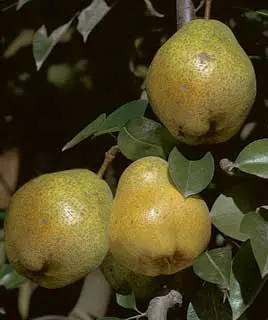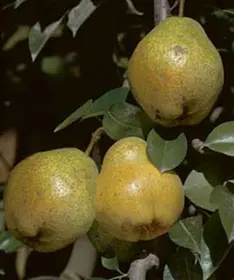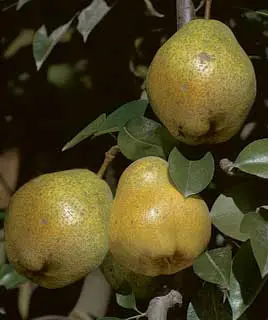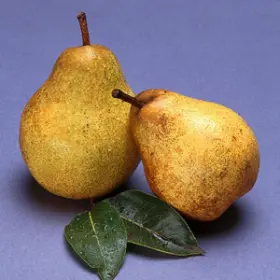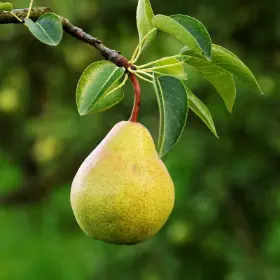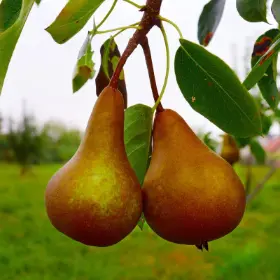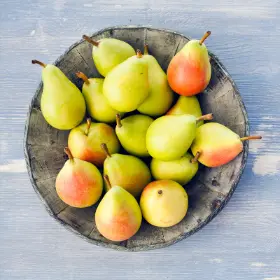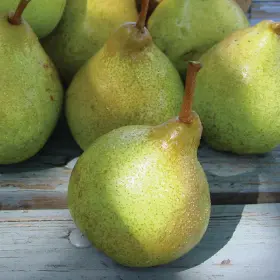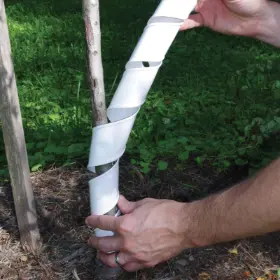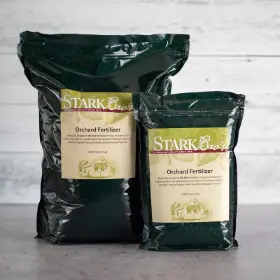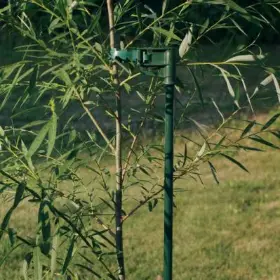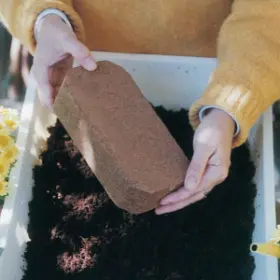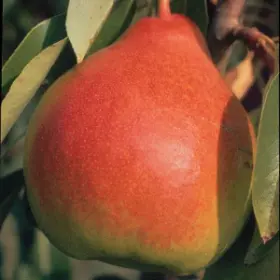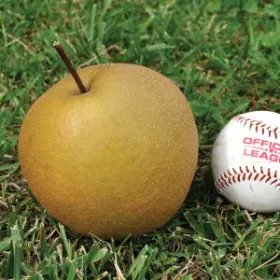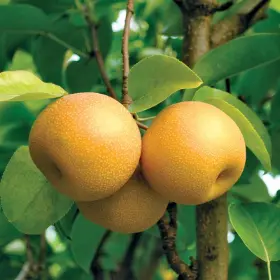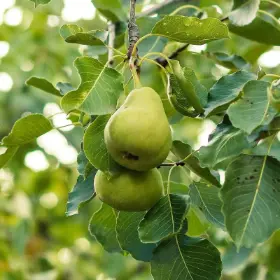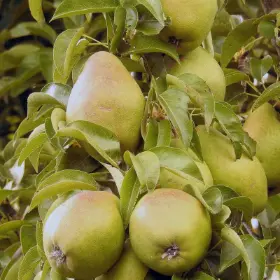Kieffer Pear Tree
Description
Grow this robust tree (blight-resistant and bears young) with its big, yellow fruit as far North as Zone 4 and as far South as Zone 9. The perfect pear for canning and preserves. Pick your pears when still firm and yellow-green in color. Then store at 60-70 degrees F to allow pears to finish ripening. Self-pollinating. Harvest in mid-October.
Characteristics
| Bloom Color | White |
| Bloom Time | Late |
| Fruit Color | Green |
| Fruit Size | Medium - Large |
| Hardiness Zone Range | 4 - 9 |
| Pollination | Self-Pollinating |
| Ripens/Harvest | Mid October |
| Shade/Sun | Full Sun |
| Soil Composition | Loamy |
| Soil Moisture | Well Drained |
| Soil pH Level | 6.0 - 7.0 |
| Texture | Coarse |
| Years to Bear | 4 - 6 |
Zone Compatibility
Pollination
This variety is self pollinating.
Tools & Supplies
Planting & Care
Learn all about how to grow pear trees in The Growing Guide. An entire section of our website dedicated to your growing success.
Questions & Answers
While most types of fruit reach their peak on the branch or vine, pears need to be picked before ripening. If left on the tree, pears ripen from the inside out and, by the time they seem to be at the ripe stage, they are beyond it — usually mushy with a mealy texture beneath the skin.
To avoid such results, you must pick pears when they are mature but not yet fully ripened. Figuring out the answer to “when are pears ripe?” can be difficult. When in season, a mature pear will still be firm to the touch, so feel won’t be a strong indicator. You can’t really go by sight either; a mature pear could be a variation of colors, like green, yellow, or even blush, depending on the variety.
The best way to tell if a pear is ready to harvest is by taking the fruit in your hand and tilting it horizontally. The mature fruit will easily come away from the branch at this angle (as opposed to its natural vertical hanging position). If it is not yet ready for picking, it will hold on to the branch.
Kieffer and Maxine will cross-pollinate one another for fruit production.
The fruit does still need to be ripened off the tree like other European type pears, but it retains its apple-like crunch. The best way to tell if it's ready to eat after picking and ripening off the tree is to squeeze it gently near the "shoulder" of the fruit and when it gives slightly, it's ready. The flavor improves as it ripens and would probably not be as good if the fruit is eaten right off the tree.
That will depend upon which option you choose. Please see the "Choose an option" dropdown menu near the top of the page, which will show you the various sizes/options that are available. Then scroll down to the bottom for spacing. Dwarfs need 10-12 feet, semi dwarfs need 12-18 feet and standards need 18-20 feet
Will this tree pollinate a Moonglow pear tree? Thanks!
Hi Chelsea, The Kieffer pear is a late blooming self pollinating variety. It blooms much later than the Moonglow so it is not a good pollinator for this variety.
We appreciate you reaching out to us. Both varieties are self pollinating and do not require another tree to bear fruit. If you are planting self pollinating trees they do say having another variety planted close by will bring larger crop yield.
If you have any further questions please don't hesitate to reach back out to us. Have a great day!
We appreciate you reaching out to us. Unfortunately, we are out of stock this spring. Make sure you don't miss out next time by having us automatically notify you when it becomes available again. Also these 2 varieties will pollinate together.
If you have any further questions please don't hesitate to reach back out to us. Have a great day!
Yes, it will.
Kieffer and Bartlett will cross-pollinate one another.
Customer Reviews
Be the first to review this item

